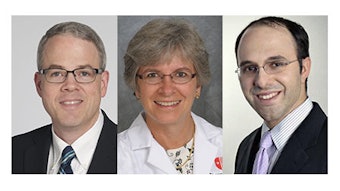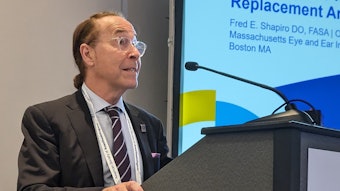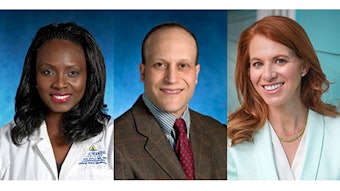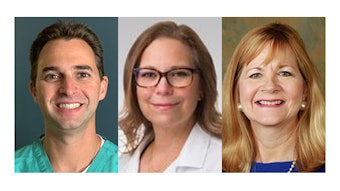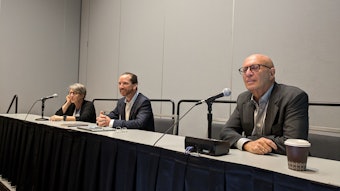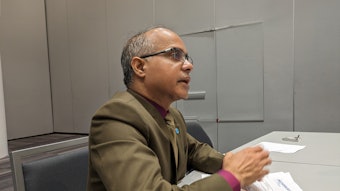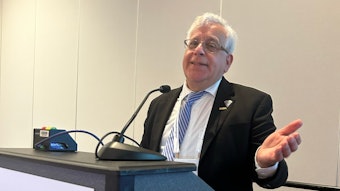Putting supply chain issues in the past
Plan a sustainable, resilient practice.

The COVID-19 pandemic was an effective demonstration of the fragility of our supply chain. Anesthesiologists found themselves faced with shortages in equipment, supplies, and medications. And although things are returning to “normal,” anesthesiology is still experiencing supply chain issues that most anesthesiologists are unaccustomed to. Those challenges, however, are not without their solutions.
One of those potential solutions comes in the form of regional anesthesia. Rachel Outterson, MD, Clinical Assistant Professor of Anesthesiology at Stanford University School of Medicine in Stanford, California, said anesthesiologists should take a lesson from areas that already rely on regional anesthesia to get by.
“Regional anesthesia is a preferred choice in many low-resource settings around the world because the required medications and supplies are relatively few compared to those for general anesthesia,” Dr. Outterson said. “So regional anesthesia is a natural choice in times of scarcity induced by supply chain shortages. For the same reasons, it can be a more environmentally sustainable choice for anesthesia.”
Dr. Outterson indicated there are slight practice changes anesthesiologists can make while utilizing regional anesthesia to maximize the sustainability benefits. While a regional block is not the “cure all" solution for every anesthetic, it is an essential tool for the practice of resilient, sustainable anesthesia.
Dr. Outterson was part of a panel of five experts who discussed that and other essential tools in 2023’s session, “No Supply Chain, No Problem: Tips for a Sustainable, Resilient Practice.”
Another area where anesthesiologists have experienced some of the highest shortages in decades is in pharmaceuticals. According to the American Society of Health-System Pharmacists, there were more than 300 drug shortages in the U.S. in the second quarter of 2023. Molly Herr, MD, Pediatric Anesthesiologist and Chair of the Rochester Sustainability Committee at the Mayo Clinic in Rochester, Minnesota, said that drug manufacturer reporting indicates these shortages can occur for a number of reasons, including regulatory issues, supply and demand imbalances, and manufacturing and quality issues.
“Some ways anesthesiologists can decrease the impact of these pharmaceutical shortages include the use of prefilled syringes from the manufacturer, pharmacy-made smaller aliquots from multi-use vials to decrease waste, careful and thoughtful management to use medications only when they are needed and to substitute alternative medications that have a similar effect and safety profile, and finally, choosing the right-sized vial or bottle for patient age, weight, and length of procedure in order to reduce waste,” Dr. Herr said. “Decreasing pharmaceutical waste not only reduces the impact of drug shortages, but also saves money and increases the resiliency of our valuable anesthetic medications.”
As for environmental impacts, volatile anesthetics are potent greenhouse gases and comprise the majority of the total carbon footprint of an anesthetic. Shreya Aggarwal, MD, FASA, Anesthesiologist at Mobile Anesthesiologists in Chicago, Illinois, said that desflurane and nitrous oxide are the most significant when it comes to greenhouse gases, but there are things anesthesiologists can do to mitigate their impact.
“This includes utilizing other anesthetics with lower global warming potentials, decommissioning N20 use from hospital facilities, and using low-flow anesthesia. Mindful use of fresh gas flows and volatiles is important to the resiliency of our vulnerable supply chains,” Dr. Aggarwal said.
Ultimately, reducing waste and increasing efficiency can have a big impact on both supply chain issues and the environmental concerns surrounding anesthesiology, said Brian Chesebro, MD, Anesthesiologist with the Oregon Anesthesiology Group, Portland, Oregon.
“Surgical supplies and equipment make up an enormous proportion of a hospital’s resource consumption and downstream waste volume. Yet, much of the equipment and supplies go unused, only to be thrown away at the end of surgery,” Dr. Chesebro said. “By focusing on the efficient, appropriate, and consistent use of only necessary items, the amount of consumption and waste can be dramatically reduced – creating increased resilience and ability to withstand supply fluctuations.”
